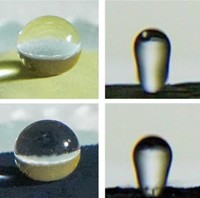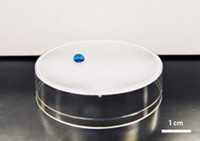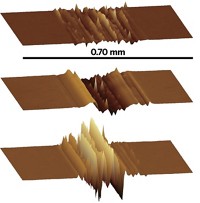Advertisement
Grab your lab coat. Let's get started
Welcome!
Welcome!
Create an account below to get 6 C&EN articles per month, receive newsletters and more - all free.
It seems this is your first time logging in online. Please enter the following information to continue.
As an ACS member you automatically get access to this site. All we need is few more details to create your reading experience.
Not you? Sign in with a different account.
Not you? Sign in with a different account.
ERROR 1
ERROR 1
ERROR 2
ERROR 2
ERROR 2
ERROR 2
ERROR 2
Password and Confirm password must match.
If you have an ACS member number, please enter it here so we can link this account to your membership. (optional)
ERROR 2
ACS values your privacy. By submitting your information, you are gaining access to C&EN and subscribing to our weekly newsletter. We use the information you provide to make your reading experience better, and we will never sell your data to third party members.
Environment
Silsesquioxanes Bead Water For A Clean Sweep
Rough surface texture enhances hydrophobicity of fluorinated silicon-oxygen cage compounds
by Stephen K. Ritter
March 30, 2006

Ultrahydrophobic materials are so water-resistant that they can induce a drop of water to bead up nearly perfectly and roll off the surface of the material.
An improved explanation for this phenomenon now is being offered by a team of chemists that has been studying ultrahydrophobic materials known as fluorinated polyhedral oligomeric silsesquioxane (POSS) compounds. In addition to the typical water repellency and oil resistance expected from fluorinated alkyl chains, they explain, the molecular-scale surface roughness of some fluorinated Si8O12 POSS films further lowers surface tension to enhance the hydrophobicity.
Scott T. Iacono, Wade W. Grabow, Joseph M. Mabry, and Ashwani Vij of the Air Force Research Lab at Edwards Air Force Base, in California, carried out the work. Iacono, now a graduate student in Dennis W. Smith Jr.???s group at Clemson University, discussed some of the results this week during a symposium sponsored by the Inorganic Chemistry Division at the ACS national meeting in Atlanta.
POSS compounds are silicon-oxygen cages, such as Si8O12, that have an organic substituent on each silicon atom. The compounds are commercially available as monomers or oligomers and are used as nanoparticle fillers or copolymers to reinforce organic polymers, adding to their resistance to abrasion, oxidation, and heat.
In the past few years, Mabry and his coworkers have prepared what they believe to be the first fluorinated POSS compounds. They noted that the crystalline solids are the most hydrophobic molecular materials known; only a few polymeric materials, such as poly(perfluoroethers), are slightly more hydrophobic.
In Atlanta, Iacono described one part of the research that entailed ???corner-capped??? fluorinated Si8O12 compounds, in which seven of the substituents are fluoropropyl groups (???CH2CH2CF3) and the remaining substituent is either a fluoropropyl or longer fluoroalkyl group or a branched fluoroalkyl group. The corner-capped compounds, although not as hydrophobic as some of the team???s other fluorinated POSS compounds, were good models to observe how molecular structure and film surface roughness influences water- and oil-resistance, Iacono said.
The compound corner-capped with a hexafluoroisobutyl group [???CH2CH(CF3)2] has a surface water-drop contact angle of 122° (180° is the maximum), about 10° greater than that of polytetrafluoroethylene. X-ray crystal structure analysis coupled with atomic force microscope images of the corner-capped compounds further showed that the arrangement of the fluoroalkyl substituents results in micrometer-scale surface features on spun-cast films, rather than smooth surfaces.
Iacono likened these surface properties to those of a lotus leaf. He noted that on smooth hydrophobic surfaces water beads up and simply rolls off, leaving behind any particulate matter. But on the self-cleaning lotus leaf, micrometer-sized wax crystalloids create a rough surface texture that reduces the surface tension enough so that when water rolls off it carries any particulate matter with it for complete cleaning. The team believes this phenomenon is at work in the fluorinated POSS compounds, giving them above-average hydrophobicity, and it could make them potentially useful in a number of applications.
The Air Force researchers still have a few cards up their sleeves regarding other fluorinated POSS compounds, and they don't want to divulge those results just yet, Vij said. Meanwhile, they are investigating blending the fluorinated POSS compounds with polymers to increase the hydrophobicity and oil resistance.





Join the conversation
Contact the reporter
Submit a Letter to the Editor for publication
Engage with us on Twitter